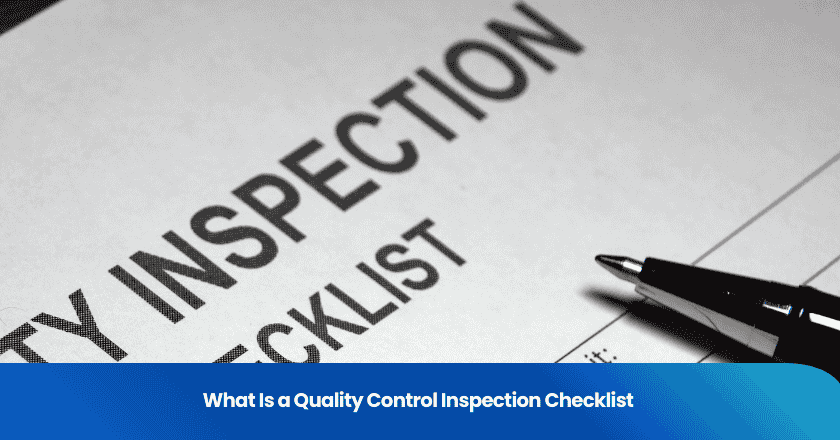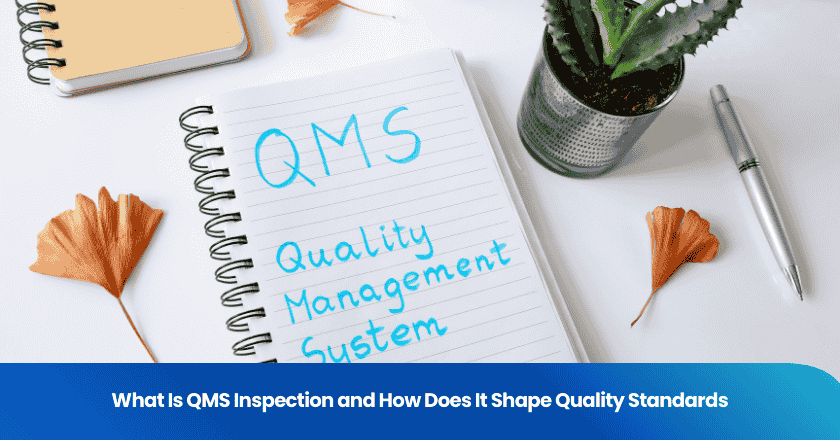
You gain a significant advantage when you choose third party inspection services. These services operate independently, giving you impartial results that internal teams or customer-driven checks cannot guarantee. Unbiased quality assurance helps you reduce risks and improve operational efficiency. Many companies see cost savings and better compliance when outsourcing inspections. For example, 59% of companies use independent inspection to lower costs and enhance production efficiency. This approach lets you focus on core business activities while meeting strict industry standards.
Key Takeaways
- Third-party inspection services provide unbiased evaluations, ensuring compliance with industry standards and reducing risks in your supply chain.
- Using independent inspectors enhances trust with customers and stakeholders, as they focus solely on quality without internal pressures.
- Engaging a third-party inspection agency can lead to cost savings and improved operational efficiency, allowing you to concentrate on core business activities.
- These services help identify defects early, which reduces production rejections and warranty costs, ultimately protecting your business reputation.
- Choosing a reputable third-party inspection agency with proper accreditation can enhance your market opportunities and credibility.
What Are Third Party Inspection Services
Definition and Core Purpose
You rely on third-party inspection services to achieve independent verification of products, equipment, and processes. According to international standards organizations such as ISO and ASTM, third party inspection services represent an impartial process performed by accredited inspection bodies. These inspections confirm that equipment, lifting gear, and structures meet regulatory and international standards. You gain assurance of safety, efficiency, and compliance when you use these services.
The core purpose of third-party inspection services centers on providing unbiased quality assurance services. You benefit from objective evaluations that help you meet industry requirements and avoid conflicts of interest. These services play a vital role in manufacturing and supply chain management. The table below outlines the primary objectives and core purposes:
| Objective | Description |
|---|---|
| Ensure Product Quality | You verify that products meet established quality standards. |
| Compliance with Regulations | You ensure adherence to relevant laws and regulations. |
| Enhance Customer Trust | Independent evaluations build trust with your customers. |
| Risk Reduction | You mitigate risks associated with product recalls and losses. |
| Supply Chain Reliability | Factory audits and inspections contribute to a stable and reliable supply chain system. |
| Clear Quality Information | You gain insights into the quality and efficiency of your supply chain processes. |
How Third Party Inspection Services Work
You initiate third-party inspection services by engaging an accredited inspection agency. The process follows a structured sequence to ensure transparency and reliability. Here is a typical workflow for inspections:
1. Your site engineer or project engineer prepares the Work Inspection Request (WIR).
2. The engineer reviews and submits the document.
3. The document controller sends the WIR to a third party.
4. The consultant or third party records and reviews the WIR.
5. The contractor receives feedback on the WIR.
6. The contractor takes action based on the WIR status.
You encounter third-party inspection services in several industries and scenarios. These inspections are common when you establish new supplier relationships or enter new markets with specific regulatory requirements. You also use them during the launch of products with enhanced quality specifications. Frequent scenarios include regulatory compliance verification, customer requirement validation, and risk assessment for high-value products.
Tip: You can leverage technological advancements to improve the effectiveness of third-party inspection services. AI and machine learning enhance accuracy and efficiency, while IoT and smart sensors provide real-time data for predictive maintenance. Remote and virtual inspections offer flexibility and cost savings. Blockchain technology ensures transparency and traceability in inspection records.
You see global trends driving the adoption of third-party inspection services. Increased regulations and compliance standards push companies to seek independent inspections. Government incentives for sustainable initiatives also contribute to this trend. The Asia-Pacific region experiences rapid growth due to infrastructure development and industrial expansion. You notice a growing demand for inspection services in green technologies as consumer behavior shifts.
You use third party inspection services to strengthen your supply chain, reduce risks, and build trust with stakeholders. These inspections provide you with reliable information and help you maintain high standards across your operations.
Third Party vs. Other Quality Checks
First, Second, and Third Party Inspections
You encounter several types of inspections in quality assurance. Each type serves a distinct purpose and involves different parties. Understanding these differences helps you select the right approach for your business needs.
| Audit Type | Process Description | Outcome Description |
|---|---|---|
| First-party | You conduct these inspections within your own organization using internal auditors. | You verify compliance and evaluate the effectiveness of your processes and controls. |
| Second-party | You perform these inspections on your suppliers or partners, often involving your own auditors and technical experts. | You confirm compliance with standards, contracts, or purchase agreements. |
| Third-party | You engage independent organizations to carry out these inspections. | You validate that your management system meets specific standards or legal requirements. |
You see clear distinctions in roles and responsibilities among these inspection types.
| Type of Inspection | Conducted By | Impartiality Level |
|---|---|---|
| First-Party Inspection | You or your internal team | Lacks complete impartiality |
| Second-Party Inspection | Your buyers or customers | More objective, but still has vested interest |
| Third-Party Inspection | Independent organizations | Unbiased and objective |
First-party inspections allow you to monitor your own processes. Second-party inspections let you assess suppliers and ensure contract compliance. Third-party inspection services provide an external, unbiased evaluation. You benefit from objective results that help you meet regulatory and industry standards.
You may have heard misconceptions about third-party inspection services. Some believe these providers do not follow OEM protocols or lack proper training. In reality, reputable third-party inspection services employ technicians with specialized or OEM training. Many independent service organizations offer expertise equal to or greater than OEM personnel. You gain access to cost-effective solutions and flexibility without sacrificing quality.
Why Independence Matters
You rely on independence to ensure the integrity of inspections. When you use third-party inspection services, you remove conflicts of interest and gain trustworthy results. Independent inspectors focus solely on meeting agreed-upon standards. You avoid external pressures that can compromise quality.
Independence in inspections eliminates bias and enhances the reliability of your quality assessments. You build trust with stakeholders and demonstrate your commitment to compliance.
You face risks when you depend on non-independent quality checks. Internal teams may feel pressure to overlook issues to meet production targets. You may encounter limited expertise and accountability. Third-party inspection services address these challenges by providing impartial evaluations and specialized industry knowledge.
| Feature | In-House QC | Third-Party Inspection |
|---|---|---|
| Bias | Potentially biased (pressure from production) | Unbiased and impartial (accountable to client) |
| Expertise | Limited to internal products/processes | Broad, specialized industry knowledge |
| Accountability | Internal reporting | External, objective reporting |
You benefit from third-party inspection services in several ways:
- You receive unbiased perspectives that ensure compliance with standards and regulations.
- You eliminate conflicts of interest, which enhances the trustworthiness of your evaluation process.
- You gain access to inspectors who focus solely on quality standards, free from internal or external pressures.
You strengthen your business credibility and reduce risks when you choose independent inspections. Third-party inspection services help you maintain high standards and deliver reliable products to your customers.
Key Features of Third Party Inspection Agency
Objectivity and Unbiased Results
You depend on a third party inspection agency to deliver objective and unbiased results. These agencies operate independently, which means you receive evaluations free from internal influence or pressure. Unlike internal quality control departments, a third party inspection agency acts as a neutral evaluator. This independence builds trust throughout your supply chain and ensures that inspections reflect the true condition of your products.
- Third party inspection agencies provide unbiased evaluations, reducing the risk of internal bias.
- Neutral assessments enhance trust and transparency in your business relationships.
- Their expertise helps you identify defects early, supporting your commitment to quality control and manufacturing standards.
A third party inspection agency uses several mechanisms to maintain objectivity. Inspectors do not have affiliations with your factory or your buyers. Agencies often rotate inspectors to avoid familiarity and reduce bias. You benefit from impartial reports that support your compliance with regulations and quality control goals.
Compliance and Industry Standards
You rely on a third party inspection agency to ensure your products meet strict compliance with regulations and industry standards. These agencies possess technical expertise, specialized equipment, and qualified inspectors. They verify that your products and processes align with manufacturing standards and regulatory requirements.
| Requirement Type | Details |
|---|---|
| Technical Expertise | Agencies demonstrate expertise in relevant disciplines. |
| Specialized Equipment | Agencies use advanced tools for accurate inspections. |
| Competent Inspectors | Inspectors are qualified and experienced. |
| Compliance with Standards | Inspections verify adherence to approved designs and standards (e.g., UL, ASTM). |
| Accreditation | Agencies hold accreditations such as IAS AC291 and ISO 17065. |
You see third party inspection agencies working across sectors like oil and gas, manufacturing, and pharmaceuticals. They help you achieve compliance with regulations, safety certifications, and environmental standards. In industries such as healthcare and food production, agencies ensure your quality control measures meet the highest expectations. You also benefit from their knowledge of good manufacturing practices and robust quality management systems.
Tip: Choosing a third party inspection agency with international accreditation enhances your reputation and expands your market opportunities.
Benefits of Third-Party Inspection Services
Risk Reduction and Quality Assurance Services
You face many risks in global supply chains. A third party inspection agency helps you manage these risks with structured frameworks and proven processes. You gain stronger risk management by using inspections that follow standards like NIST 800-53, NIST 800-161, and CSF 2.0. These frameworks set clear security controls, address supply chain vulnerabilities, and align your security with business goals.
You benefit from inspections that enhance resilience against third-party vulnerabilities. These inspections ensure compliance, reduce regulatory penalties, and streamline your operations through automation. You also improve visibility into vendor risks, which supports proactive decision-making.
A third party inspection agency delivers quality control through early defect detection and thorough product verification. You see fewer production rejections, reduced rework, and lower warranty costs. Inspections support faster project approvals and reliable product traceability. You maintain high manufacturing standards and safety measures, which protect your business and customers.
Enhancing Business Credibility
You build trust with customers and partners when you use a third party inspection agency. Inspections demonstrate your commitment to independent quality assurance and strict quality control. This credibility becomes essential in international markets, where compliance and reputation drive success.
- Third party inspection agency involvement reduces defects and increases customer satisfaction.
- Inspections help you meet manufacturing standards and deliver consistent quality.
- You protect your profits and reputation in high-risk industries by ensuring compliance.
Case studies show real impact. A global brand used a third party inspection agency to meet EU regulations, which improved its reputation and consumer trust. In another case, an agency detected a dangerous defect in an automotive part, allowing the manufacturer to fix the issue before it caused harm or damaged the brand.
You also strengthen supplier relationships and contract negotiations. A third party inspection agency defines clear responsibilities, sets service levels, and ensures compliance. You gain audit rights and effective dispute resolution, which support long-term business growth.
Tip: Consistent inspections by a third party inspection agency help you achieve higher product quality, fewer customer complaints, and a stronger brand image.
You see clear differences between third party inspection services and other quality checks.
- Third-party inspections provide independence, objectivity, and transparency.
- Internal checks may face bias or time constraints.
- You receive unbiased, data-driven reports that support better decisions.
Independence allows auditors to work without interference. Objectivity ensures truthful results. Compliance supports legal and governance standards.
To evaluate your needs:
1. Define the purpose and scope of inspections.
2. Create quality control checklists.
3. Select inspection services with industry expertise and certifications.
4. Communicate clearly with suppliers.
FAQ
What industries use third-party inspection services?
You find third-party inspection services in manufacturing,pharmaceuticals, and food production. These services help you meet safety, quality, and regulatory requirements across many sectors.
How do you choose a reliable third-party inspection agency?
You should check for industry accreditations, inspector qualifications, and experience in your sector. Review sample reports and ask for references. Reliable agencies provide transparent processes and clear communication.
Can third-party inspections replace internal quality checks?
You should use third-party inspections to complement, not replace, your internal checks. Independent inspections add objectivity and credibility, while your internal team maintains daily quality control.
What documents do you need for a third-party inspection?
You need technical drawings, product specifications, purchase orders, and quality standards. Inspection agencies may also request compliance certificates and previous inspection reports.
Grow your business with TradeAider Service
Click the button below to directly enter the TradeAider Service System. The simple steps from booking and payment to receiving reports are easy to operate.




